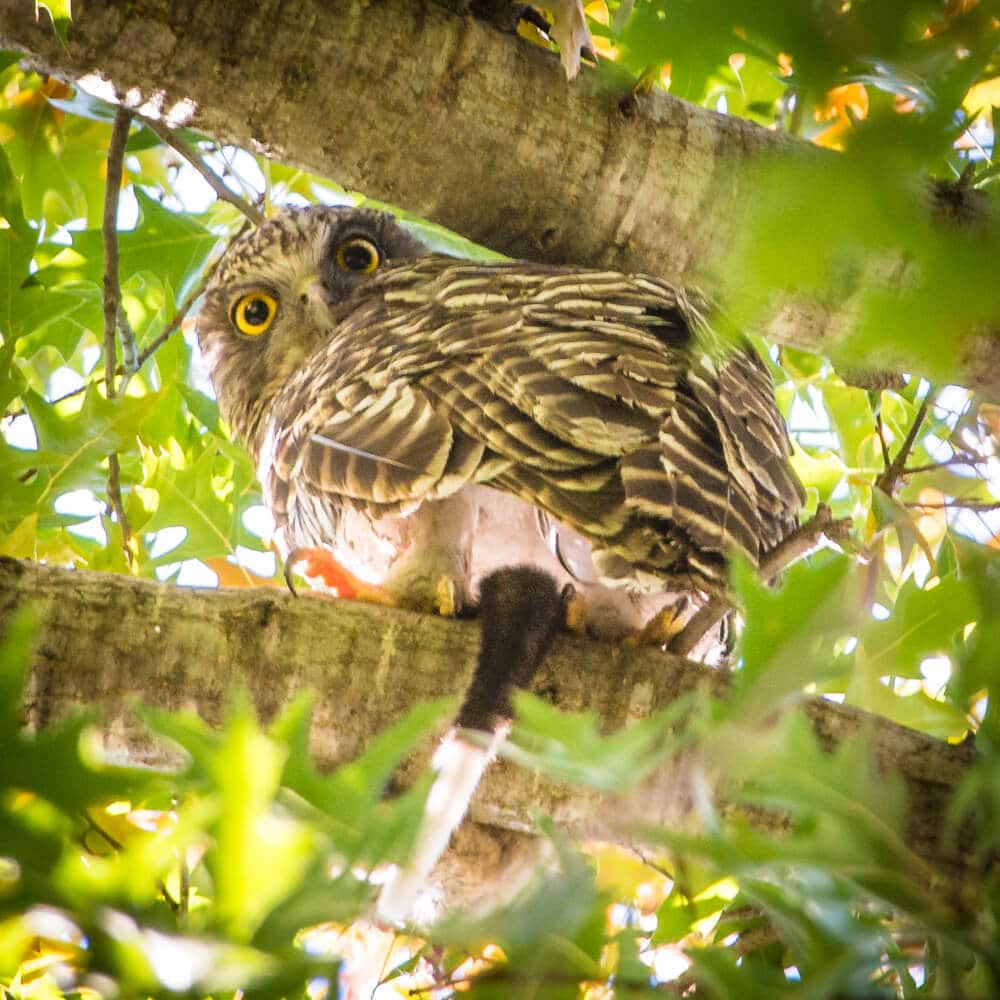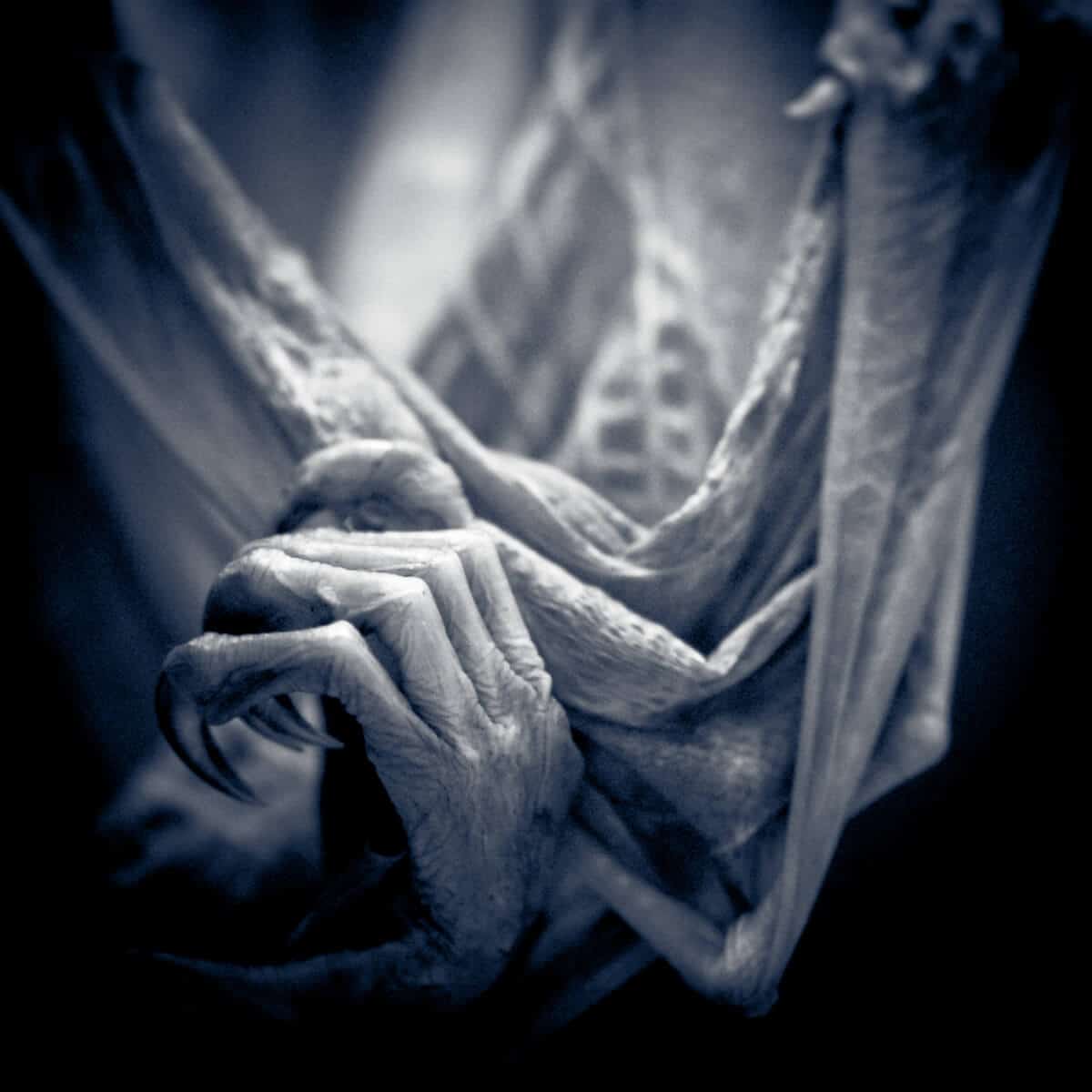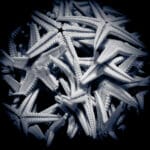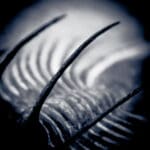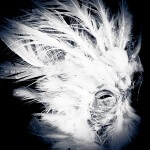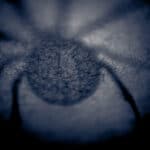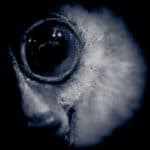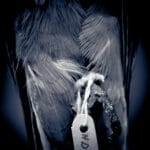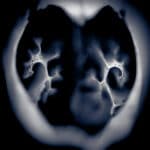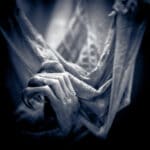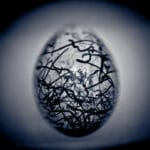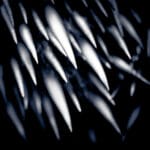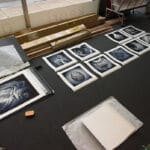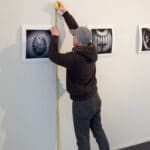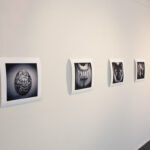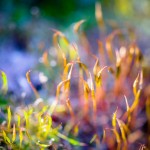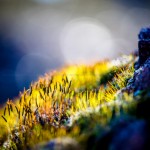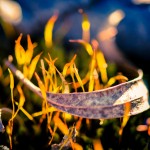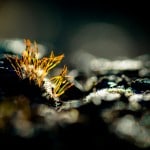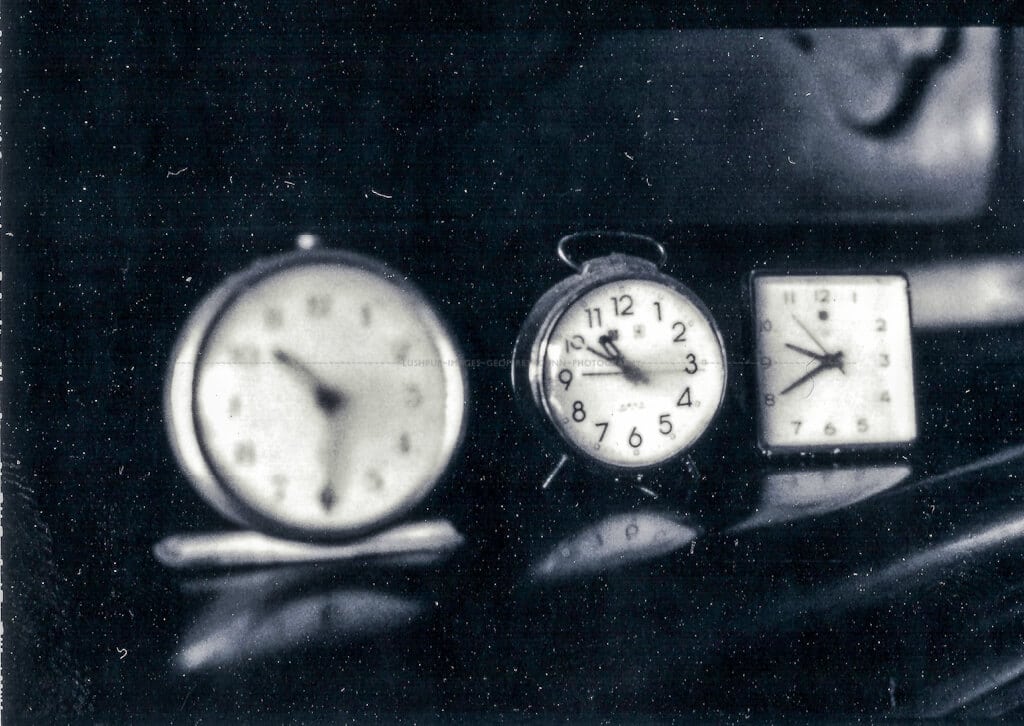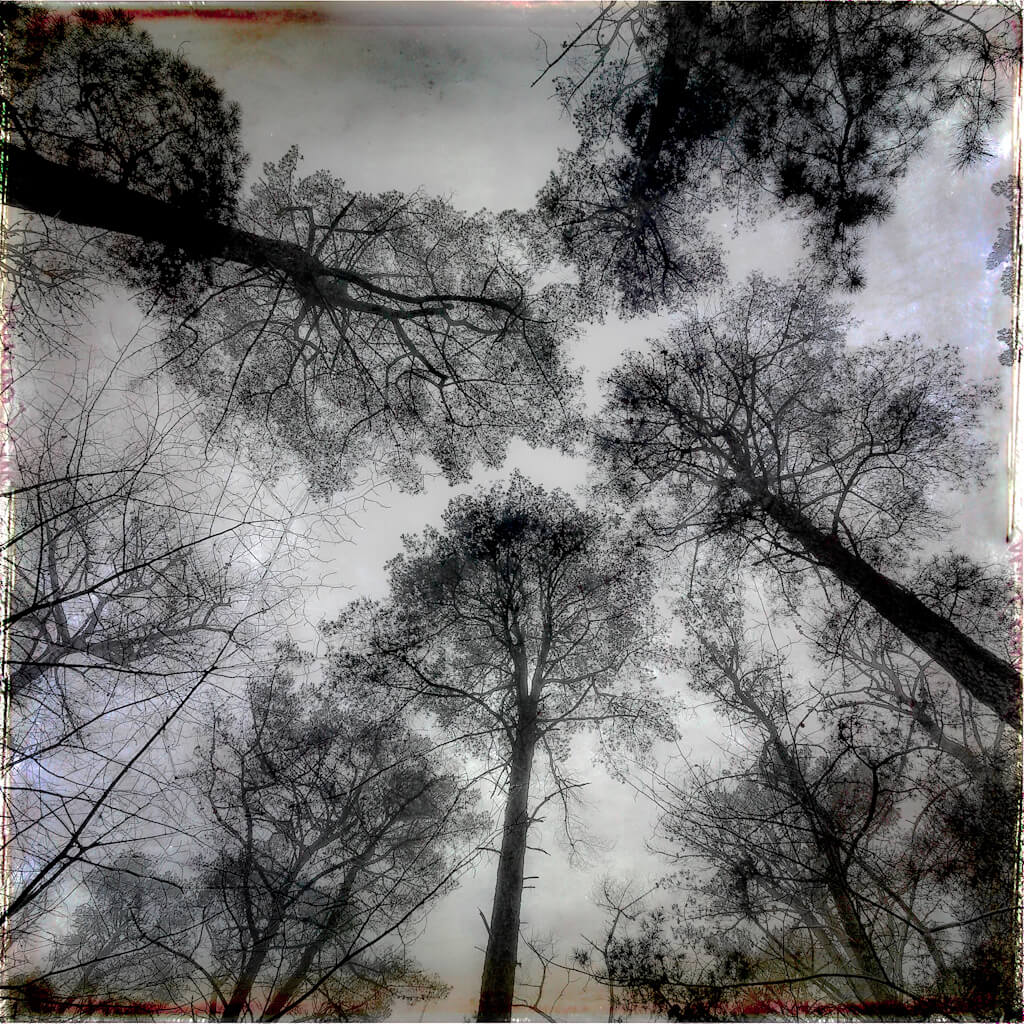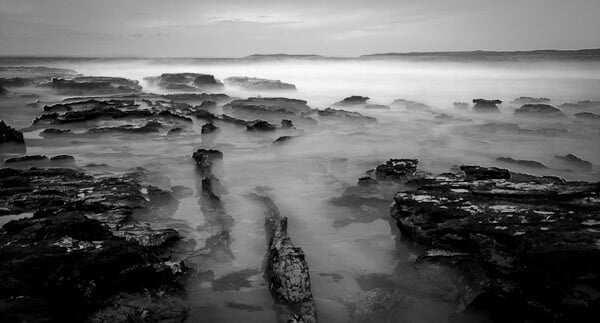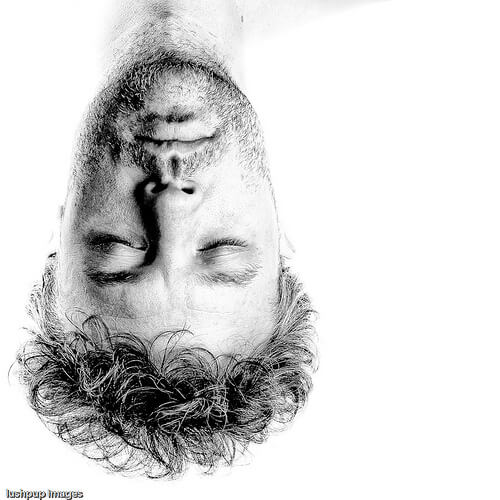Powerful Owl
Possibly the most photographed bird in Canberra at the moment. This Powerful Owl (Ninox strenua) has taken up residence in nearby Turner. Luckily for us it was visible high up in the treetops when we passed by to catch a glimpse of it. These owls typically stand about 60cm tall with a wingspan of over 1.3m though it was hard to tell the exact measurements of this one. Their diet consists of a variety of possums (brushtail, ringtail and sugar gliders) large birds (cockatoos, corellas and rosells et al) This one had caught (and was in the process of shredding) a ringtail possum and you can see its black & white tail curling over the limb of the tree.
Zoologica I - selection and hanging
OK so I have been putting together (what I realised is my first) solo show ... titled Zoologica: a photographic study of life through death. Exploring zoological specimens, the works encourage you to ponder the nature of scientific collection, death and preservation. The series comprises 12 monochromatic prints, printed on Canson Baryta Photographique by Stephen Best of Macquarie Editions in Braidwood. The final series of 12 is shown in the gallery below. I've gone with hanging the prints unframed using linen hinges and small tacks. I'm really impressed with the printing quality and the light curl of the paper really adds to the apparent depth of the images. It's a great feeling when you see your own work on a wall ... and a real buzz when there's a series of your own work up like this.
I hung the show yesterday with gallery owner Michael and it looks fantastic ... it'll look even better when fully lit.
The opening is Wednesday evening at 6pm and I'm rather looking forward to it :-)
Moss Effect
Spring is officially here! We've had rains and warmer days and while out walking with my camera on Saturday afternoon I saw the moss has geared up for sexy time.
Mosses as you may or may not know reproduce sexually via spores not seeds There are male parts, antheridia, and female parts, archegonia. They can occur on the same plant but are most likely found on different plants. The antherozoids or sperm are motile, swimming using two theadlike tails and are chemically attracted to the archegonium where fertilisation occurs to create a zygote. It is then that the second phase of the moss reproductive cycle begins with the formation of the sporophyte or spore plant. An interesting fact is that the sporophyte grows out of the archegonium of the female plant by cell division and is effectively a parasite for this phase. The sporophytes have a distinct four-part structure comprised of a foot, a long erect stem called a seta with a capsule at the top which contains the maturing spores. A peaked hood called a calyptra sits atop the capsule. A single sporophyte may contain anywhere between four and one million spores depending on the individual species. It's the sporophyte structures that are prominent in these pictures ... these ones are about 15mm tall.
Not that I initially set out to craft a post on moss reproduction this morning but I thought it may ... you know ... add something to your experience if you knew vaguely what you were looking at. Besides I find it fascinating and it is Spring after all.
You may also notice I'm using a new gallery technique to disply the pictures ... like it? Do let me know :-)
Round Like A Circle In A Spiral

Round Like a circle in a spiral...
This morning I awoke thinking about lenses and the thought: Why aren't photographs circular? I mean the lenses produce circular representations of the light. It must be for practical reasons; glass plates, negatives, storage ... convenience ... who has or had the time to cut out circles? And storing circles ... knowing which way was up. I got to thinking about how these early practical considerations have shaped the way we look at the world. How we frame and crop it to suit. Our cameras have shaped and at times constrained our view for so long that I feel sometimes we forget that the world is not cropped into 4x6 or square or 5x7 ratios ... that the light coming into our lenses is circular and that we chop it up. Our eyes don't see in terms of square cut windows. I think it strange that with the advent of new technologies that potentially free us from the practical constraints of the past (such as digital imaging, capture and projection) we still cling to them ... we call them imaging standards. I imagine that a camera that the captured the light in a circular fashion would be labelled 'novelty' or of 'limited practical use' simply because it did something new (there's an irony in there somewhere).
like a wheel within a wheel ...
From a biological perspective, our eyes see circles. We are fortunate to have them hooked up to a superlative imaging system in our brains that creates the impression that we see much more than the circles of light refracted upside-down onto the back of our eyes. Our brains take this input and effectively stitch our visual reality together for us. Our visual experience appears so seamless because the transition between scenes is edited out. You can test this for yourself very easily by a simple experiment. Standing in front of a mirror, look at your left eye. Now look at your right eye. Did you feel your eyes move? Quite likely. Did you see them move? No, you didn't. That movement is a transitional scene that your mind edits out ... I don't know why it does but it does. Magicians and sleight of hand experts exploit this phenomenon.
Now I don't spend hours in front of a mirror trying to see my eyes moving back and forth and I only present it here to illustrate how what we see is not always what we see.
The photograph: you're looking down the barrel of a 105mm field gun at a defence recruiting display at the Canberra Show. I loved the way the rifling spiraled away into the bokeh. The colour is a result of the crowd walking past the other end of the gun. Reference - sprial - blur - colour ... what more could you want? Sometimes the world blurs into shape and colour ... abstract forms and amorphous shapes (thankfully not when I'm driving ;-) ). It retains for a time the rigidity of frame, of reference but becomes something else entirely ... something without frame or reference.
Did you try the experiment? Go find a mirror and try it now. Did you see your eyes move?
Curiously Curiosity
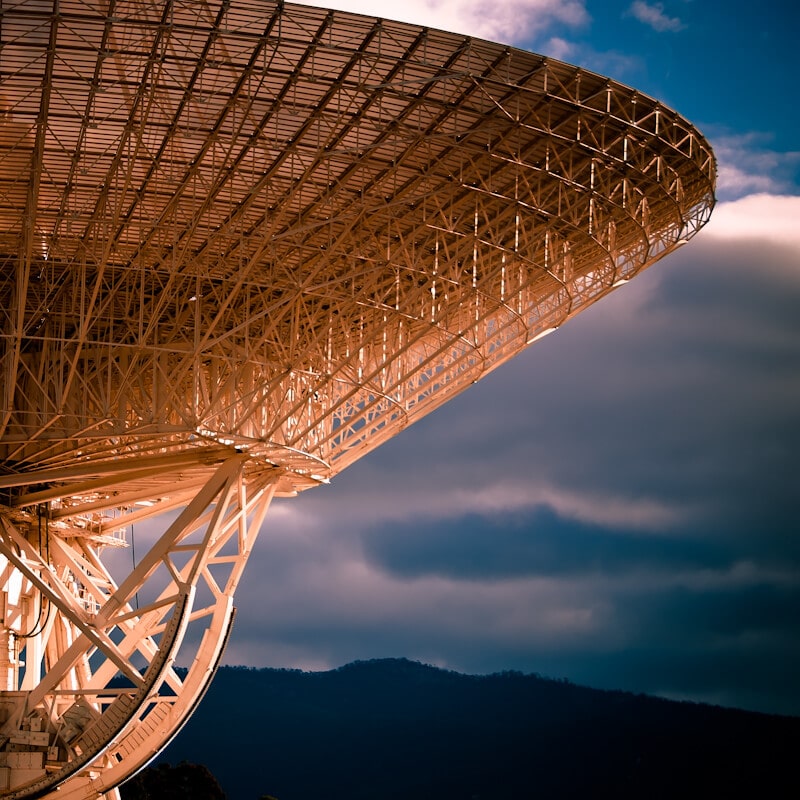 You may have gathered I like things astronomical and sciencey. On Monday afternoon I took the kids out to the Tidbinbilla tracking station outside Canberra. The station is also known as the Canberra Deep Space Communications Complex (CDSCC) and forms an integral parts of NASA's space communications network alongside similar stations in Madrid and California. The Tidbinbilla station was the one that was going to be facing Mars when Curiosity landed after its nine month journey between the planets. I wanted to be there at 1530 when the signal was received (or not received!).
You may have gathered I like things astronomical and sciencey. On Monday afternoon I took the kids out to the Tidbinbilla tracking station outside Canberra. The station is also known as the Canberra Deep Space Communications Complex (CDSCC) and forms an integral parts of NASA's space communications network alongside similar stations in Madrid and California. The Tidbinbilla station was the one that was going to be facing Mars when Curiosity landed after its nine month journey between the planets. I wanted to be there at 1530 when the signal was received (or not received!).
We arrived out there at about half-two and parked by the side of the road some 500m from the front entrance. We joined a long line of cars and more were arriving behind us. By the time we got into the visitors centre the place was packed and standing room only (and rather stuffy) with a large screen piping in the feed from JPL. It was fantastic to see so many people - and all sorts too - out there to witness something the internet would have shown them better. Mobile devices had to be switched off so they didn't interfere with the radio gear on-site. We left the main building and went outside to the playground and some fresh air(!). I caught up with a photog mate who was out there doing some time-lapse work.
I loved explaining to the kids that at that moment, at 1500 the dish was sending a signal across 220 million kilometers, to another planet, to the Curiosity to 'Go!' to begin it's descent... and that after 30 minutes we'd know whether it had worked or not. That dish there ... that one right there ... will pick up the signal. I was excited ;-)
At about 1525 we sneaked in around the side into the visitors centre to listen to the JPL stream. We could hear them calling the descent rate of 0.75 meters per second when they announced 'Touchdown! Curiosity has landed'. The place erupted in near-teary and relieved applause ... the atmosphere was terrific ... we all clapped and cheered. We applauded not only the engineering feat (the calculations!) or that it all worked (I want a sky crane!) but through relief that hopes and dreams had not been dashed. That this will be the last rover for some time and had it failed there would unlikely be another for many, many years. What a cool thing ... they took a moving science lab the size and weight of a car and flung it through space and landed it on another planet to within 7km of its landing spot ... who on Earth works that kind of stuff out?
The photo is one I took on another visit (we're somewhat regulars) during winter last year. It was an icy windy day beneath low clouds when the sunset broke through and bathed the dish in beautiful golden light.
a full moon always rises at sunset
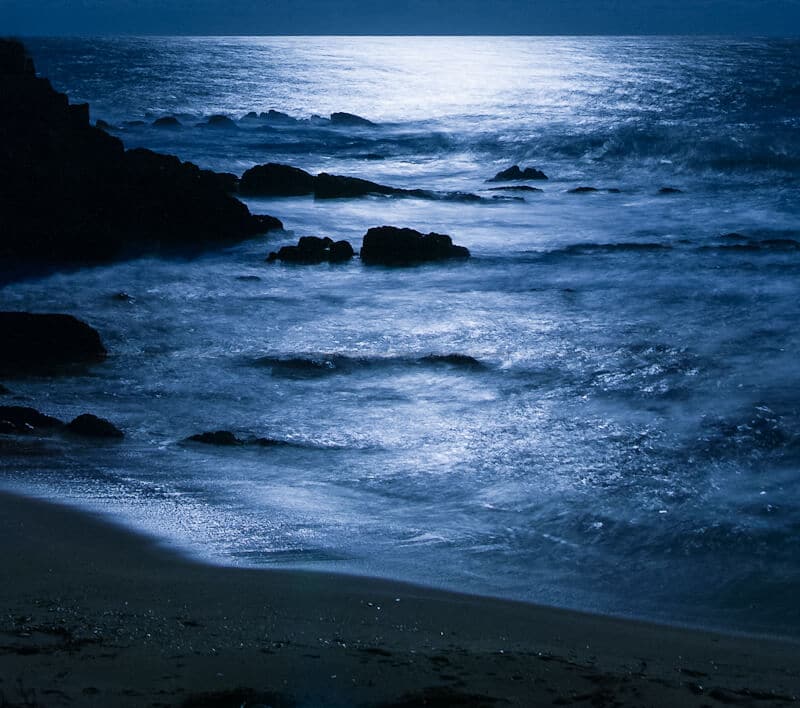
moon rises full across a sparkling sea the sun cedes the sky
You want to know something that absolutely fascinates me? Of course you do! You'll need to think about this a bit so let's go ... 'a full moon always rises at sunset' ... think about that for a moment. Have you ever seen the full moon rise at any time other than sunset? You know, like in the middle of the night or in the morning? The answer will be no because it doesn't happen. OK, so far, so good. Now hold that thought and add to the fact that the lunar cycle is fixed ... well OK, let's say regular at 29 and a half days (29.53059 days to be precise). So every 29 and a half days there's another full moon. OK? Now the next bit gets confusing but stay with me and let's quickly recap;
- full moon always at sunset
- full moon occurs every 29.5 days
Alrighty, there's another cycle working here too, the seasons. Every day the days get longer or shorter depending on the season you're in and by 'day' I'm referring to the amount of daylight. So, here in SE Australia the days are growing longer as we march toward Spring. There's a full moon this Thursday (2nd August) and it will rise at sunset even though the day has lengthened. What balance!
There's lots more moonphase related stuff over at Moonconnection.com which is where I lifted the diagram below;
]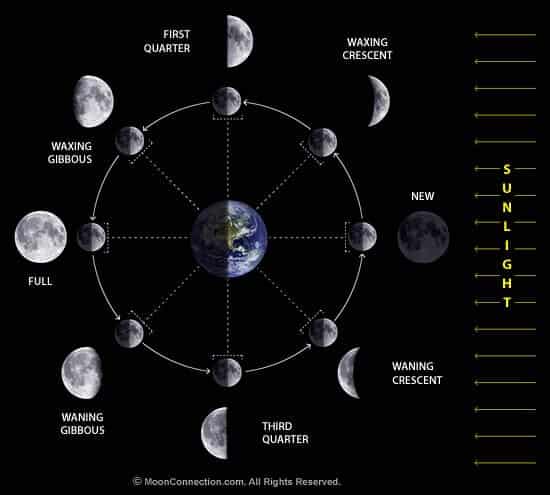
Courtesy Moonphases.com
Think about it next time you see a full moon rising ... just remember 'a full moon always rises at sunset'.
I'm the type of person who follows the moon and the seasons ... I know where the moon will be (roughly!) at any given time of the day or night depending on where the lunar cycle's up to.
Do you follow the moon? Do you use the sun to tell you which direction you're facing? Do you live above the arctic circle? You can tell me what happens there! Do tell. I'm interested.
Time
Clocks show their faces moments pass us by in silence there is no time today
Time. I've never truly gotten a handle on it ... slippery thing that it is. I can count. I count really well. I count in even beats and measures ... I turned this into percussion and music ... it seemed a natural progression. I read an interesting series of articles in New Scientist recently on the nature of time ... of causation both forward and backward (think about that for a bit ... something in the future having a causal effect on the past). Of how time doesn't inherently have direction ...that it doesn't implicitly flow one way or the other - it is how we perceive time that makes it appear that it flows. That bends my mind it - really does.
What is time to you? What your watch or phone says. Is it a feeling or a notion? Is it an instant or a the suite of sensations that accompany an event or moment? For me it can be all of those things ... how about you? I'm interested.
About the photo:
Camera: Mamiya 645 Super with 80mm f/2.8
Film: Fuji FP-3000B B&W Polaroid
Scanned: my dusty 3-in-1 multifunction scanner
Subject: Old clock sitting on the piano at Ness12 Minutes with a Super Moon
I am always struck by the saturation quality of moonlight. The colours have a rich and understated vibrancy.
This is a small bay on the far south coast of New South Wales captured using only the light of the moon ... the Super Moon of 6th may 2012 to be exact. The exposure time is 12 minutes @f/9 and you can see there was plenty of light ... and colour! Our eyes simply don't see the colours of moonlight ... they're physically incapable of doing so. In fact seeing by moonlight is perhaps the closest we will ever come to naturally viewing a scene in monochrome. (In brief, it's to do with the rods and cones that lie in our retinas and something I will do a separate post about.) It was close to midnight and although the surf was pounding in on a king tide (presumably to do with the perigee of the moon) with waves reaching to a couple of meters from the tripod ... the long exposure has effectively smoothed everything out.
About the 'Super Moon'
The Moon’s distance from the Earth is not always the same due to the elliptical shape of the orbit and variations in the gravitational attraction between the Moon, Earth and Sun. When a full moon occurs close to the perigee of the Moon (the point of its closest approach to the Earth) we observe a “super moon” phenomenon.There are anywhere from 4 to 6 super moons every year, not all appear as intense or last as long in their 'super' effect. The perigee of the Moon on the 6th of May was the most powerful in years and caused many discussions in scientific circles. There was even a claim circulating that a Super Moon contributed to the 'sinking of Titanic' (wtf!) occurring as it did 100 years after the sinking in April 1912 ... my mind boggles when I reflect that some people believe this!
What about you? Did you see the Super Moon? Did you watch the moonrise or do anything special other than perhaps go outside and look and think 'hey, it does look a little bigger'?
Familiar
Familiar hills
the horizon half-remembered
my folk grew
and grew old
died here
Yet I've never stood here before I know
the curves of the land drawn in me
How do I know this place?
My mind some structured facsimile for geography?
A genetic memory for place?
For time?
I cannot explain but I know
that my soul has been here before
I am fascinated by the notion of genetic memory ... that a landscape or place experienced over generations may leave some kind of imprint in the descendants of those generations. A line of hills, a mountain, a river ... these things change over time I know but their basic forms can remain constant on a scale far larger than the people living on them. I don't believe anyone has found any evidence such a phenomena may exist but that's not about to stop me pondering on it.
What about you? have you ever been to a place or landscape that seemed so familiar to you only to find out later that you ancestors had been there? Thought that they would practically be looking at what you're seeing now.
Shores of a methane sea
Imagine standing on a planet much colder than this one is now and looking out over a sea of liquid methane ...
Shores of a Methane Sea ... the crunch of crystalline accretions under your boot
... the way the liquid moves and sighs - not like water
but thinner and with crackle...
About the picture: playing around with the B+W ND110E 10 stop neutral density filter.
Were you interested in science at school?
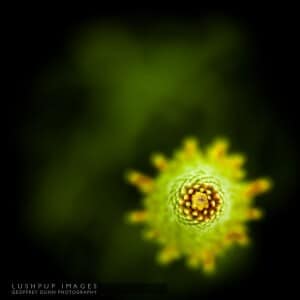 Were you interested in science at school? I was!
Were you interested in science at school? I was!
Recently I was asked by a friend on Google+ if I would mind if her son (in Year 7) could interview me as part of a school science project. The project involved speaking with with someone working in science. I was chuffed to be asked and I received a sheet of 12 questions. I had fun putting the answers together and I thought I might share them.
1. What is the best thing about your job and why?
The best thing about my job is that I get to colour in. OK, there’s the cool technology and the high-end computing gear and the conversations with bright people who really understand their scientific specialities. That and the thought that you’re doing something useful and in a way that will be helpful to the people that come after you.
2. When and how did you become interested in science?
I think I’ve always liked science. I have always been interested in the way things work but as I got older I became more interested in the way things work together … the relationships things (and people!) have with each other … the way they interact.
3. Were you interested in science at school?
I was! I was very lucky to have teachers* who were not only interested in science but helped to teach me to think scientifically. I learned that science is not a thing you learn, a subject for memory but a way that you learn … a method if you like. Sure, we did simple experiments at school but most importantly it taught us how to think. You asked if I attended a private school? I did not … public education all the way.
4. Have you won any awards for being a scientist & if so what were they?
Not for the science or research. I have won awards for the contributions my team’s work has made to much larger projects. A lot of what I do is create block for other people to place together to create something else.
5. What qualifications did you need for your job?
I required university qualifications in natural sciences and many years of information technology experience to do well in my job. I have a Bachelor of Science from the Australian National University. Another important part of my work is explaining to others what my area does and I’m a skilled communicator.
6. What is computer mapping and remote sensing?
Gosh … how long have we got?
Computer mapping (or GIS (Geographic Information Systems)) is making database recording not only what something is (tree, light pole, drain, road, house etc) but where it is in relation to something else (on top of, next to, 100m away from, north of etc). Measuring the where of the object and how it relates to the where (or spatial location) of another object is very time-consuming and fiddly. Computers (and GPS (Geographic Positioning Systems)) enable us to make those calculations very quickly and so representing & mapping those relationships becomes much easier.
Remote sensing refers to measuring the nature or properties of something from a distance rather than directly. There are many remote sensing platforms and sensors … some slung beneath aircraft or helicopters or mounted on satellites. These sensors measure all sorts of things; light, reflectivity, radiation, magnetics. The information they collect is filtered and processed and then overlaid over data and information to again look at the relationship between things. Not only the relationships but, perhaps more importantly how the things measured change over time.
7. What type of discoveries have you made?
I haven’t made any discoveries per se. I have helped to document and report relationships between ecosystems and natural resources (eg forests and water and salinity)
8. Are you passionate about your work or is it just a job?
That changes. Mostly I’m passionate about it … I do care about the quality of the work I do and ensuring that it’s useful to others to include in their work. Other times the repetitive nature of science based work (using the same tried and true technique over and over again to ensure consistent results – there is a lot of that in science-based work!) seems a drag and it becomes a job. That said, I believe what I do is important and makes a contribution.
9. Why does this type of science interest you?
I think I mentioned colouring in. The natural world is everywhere and we really don’t understand it … sure, we get bits and pieces of it and there are lots of people studying separate pieces of it very intensely but overall we don’t know how and why it does what it does. That we don’t know is what interests me.
10. Do you do experiments as well or do you just do research?
Not experiments in the ‘test-tube’ sense but we do put forward hypothesis, develop methods, test them, analyse results and then report them … so I guess we do  . Research? Always researching.
. Research? Always researching.
11. Have you done other types of science before?
No, not really … it’s all kinda scientific. I just want to say again what I said earlier … that science is not something to be learned but much more a way of thinking.
12. What do you want to achieve in your career?
It’s not a career more than a lifelong journey of discovery and (hopefully) understanding what goes on around me.
*thank you to teachers Lavers, Quodling, MacFarlane, Roxby, Scown, & Roseby :-)
Links:
Australian Science Communicators
Questacon - The National Science & Technology Centre
Sweet White Noise
When I first published this self portrait of me sleeping like a bat, I was listening to the album The Sound of White by Australian artist Missy Higgins.
Listening to the title track got me thinking about the sound of white noise and how relaxing I found it. About how white noise is the sound made by all the frequencies randomly occurring together at an equal or flat power. About how the sound is there but there is no discernible frequency or signal that stands out (because there isn't one!). It's like experiencing thick fog, an aural isolation chamber. Listening to white noise I find my mind exploring it, looking for a handle, something familiar. Rationally I know it's not there but my mind searches anyway, fumbling and groping. Then comes a strange feeling of floating with in the white noise as it surrounds me with no detectable source ... the sound comes from everywhere - omnidirectional.
White noise gets its name from the term white light which describes a light where all the frequencies are of equal power. I like exploring that too.
Wikipedia has a more thorough and technical description of white noise and it's myriad uses.

